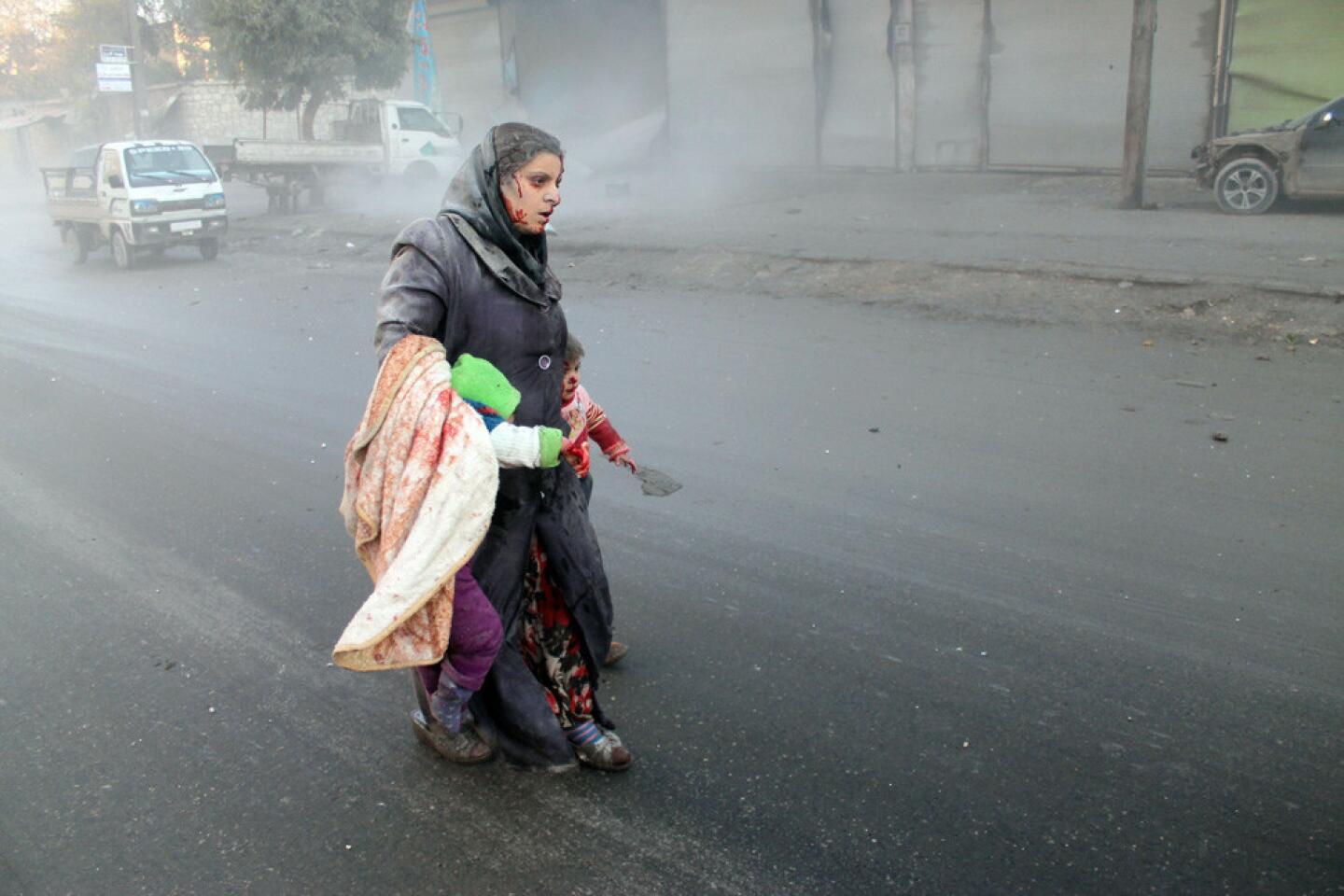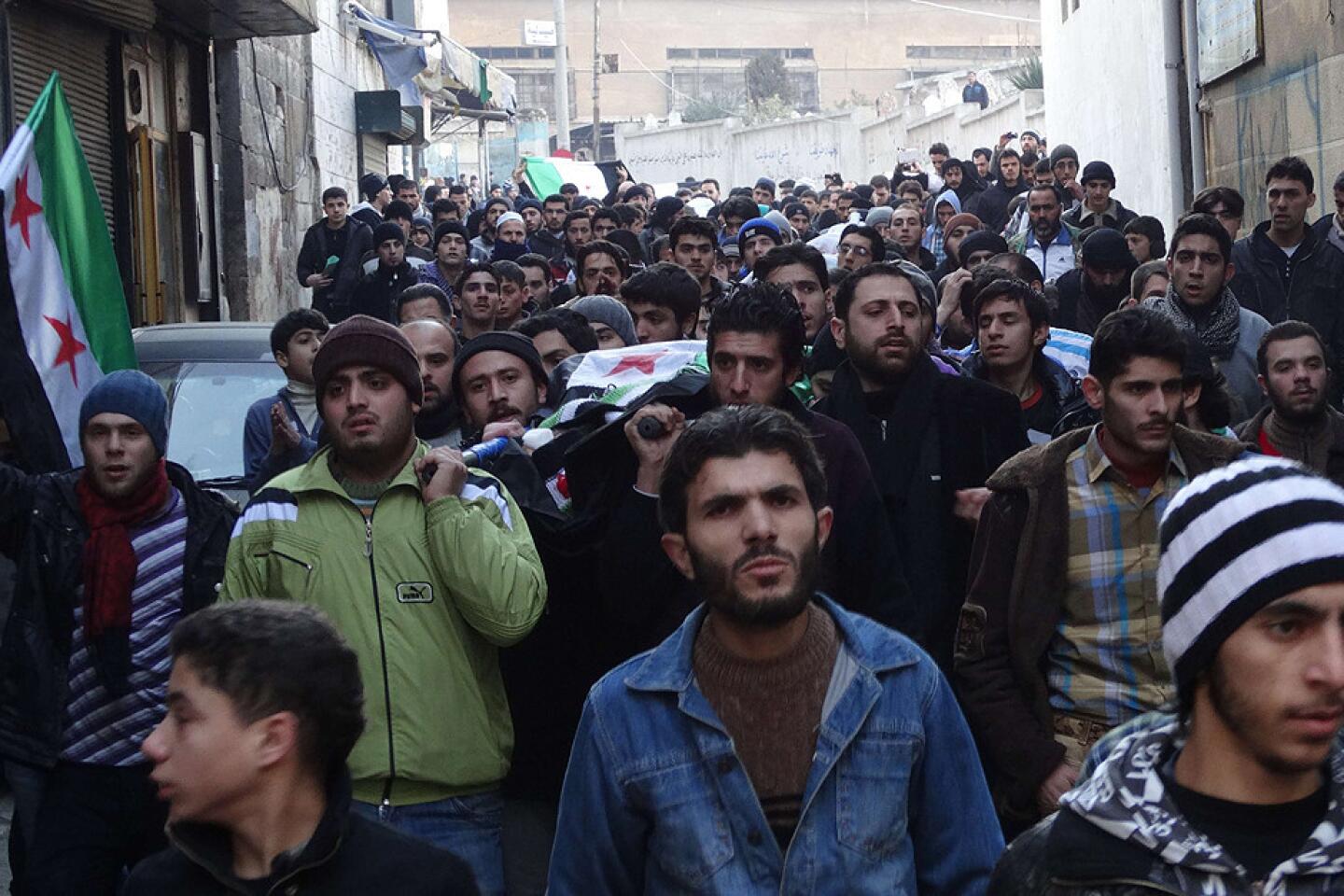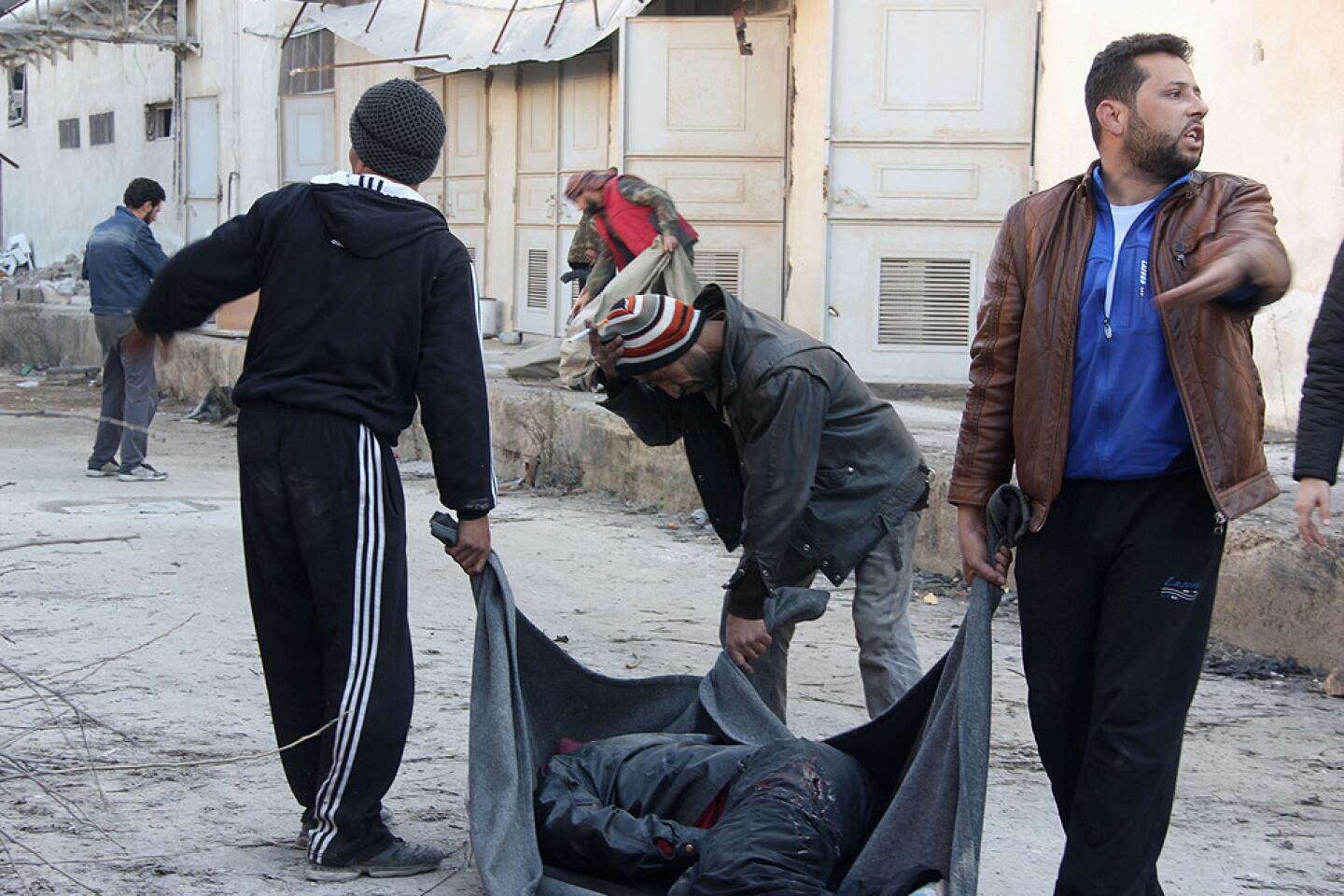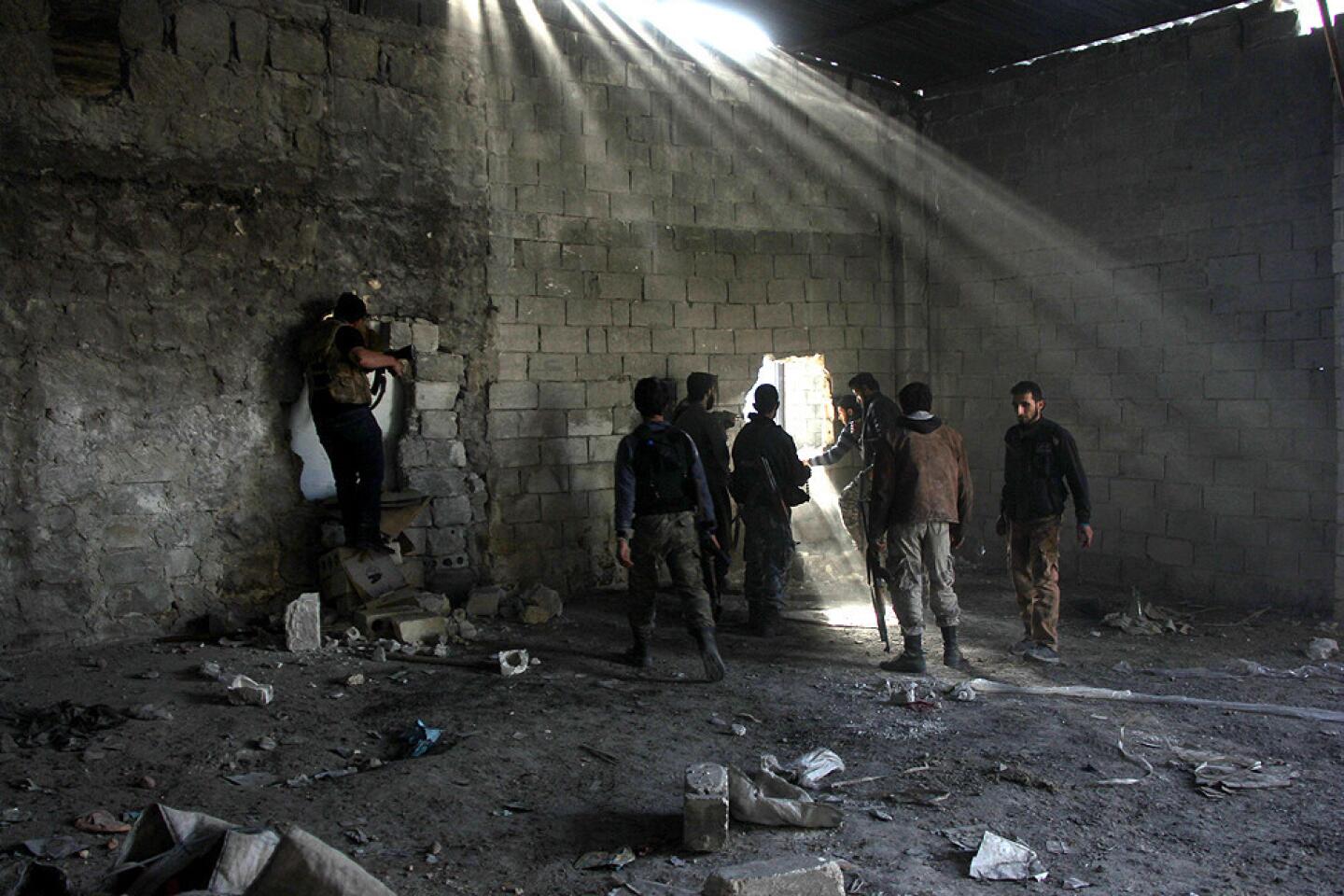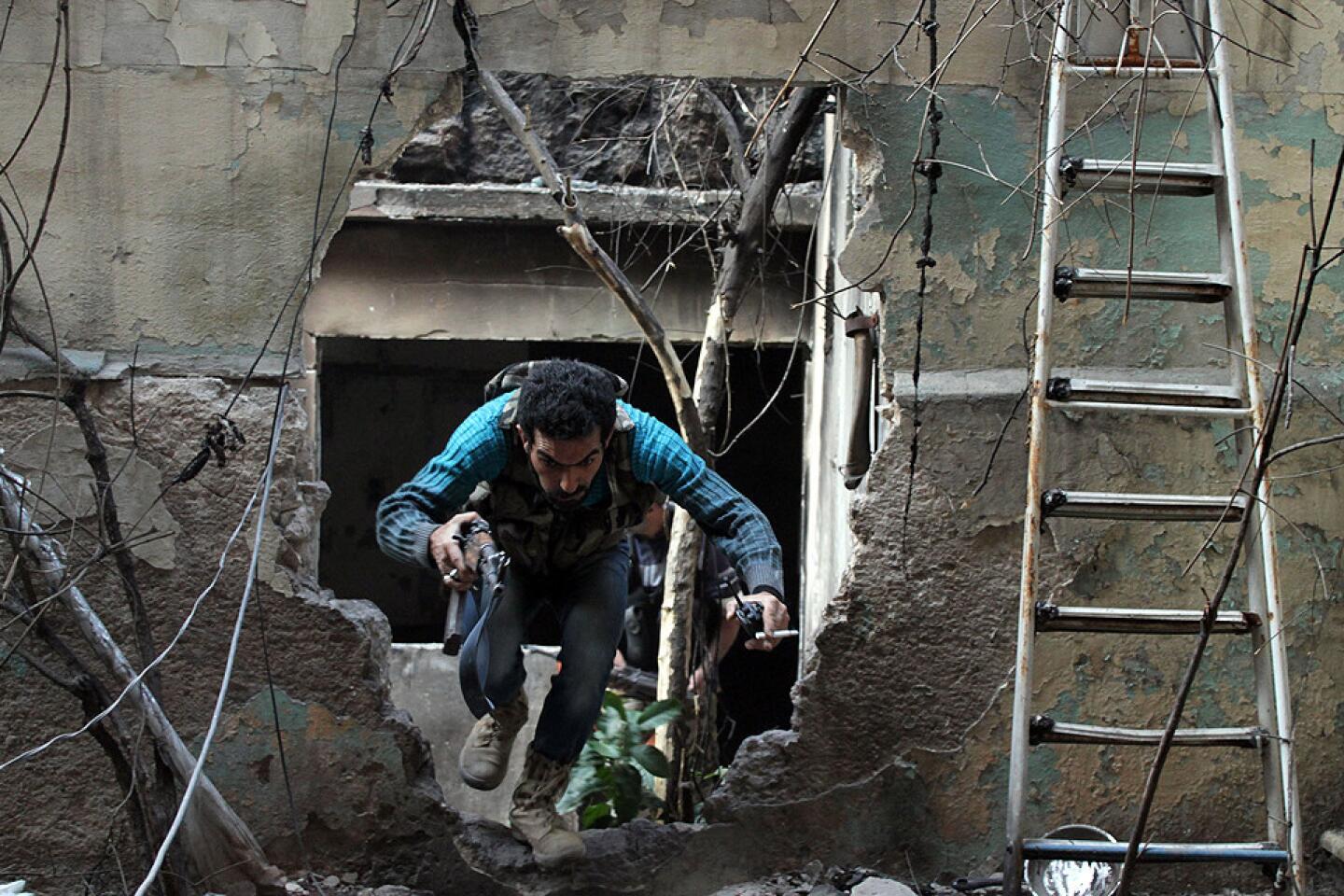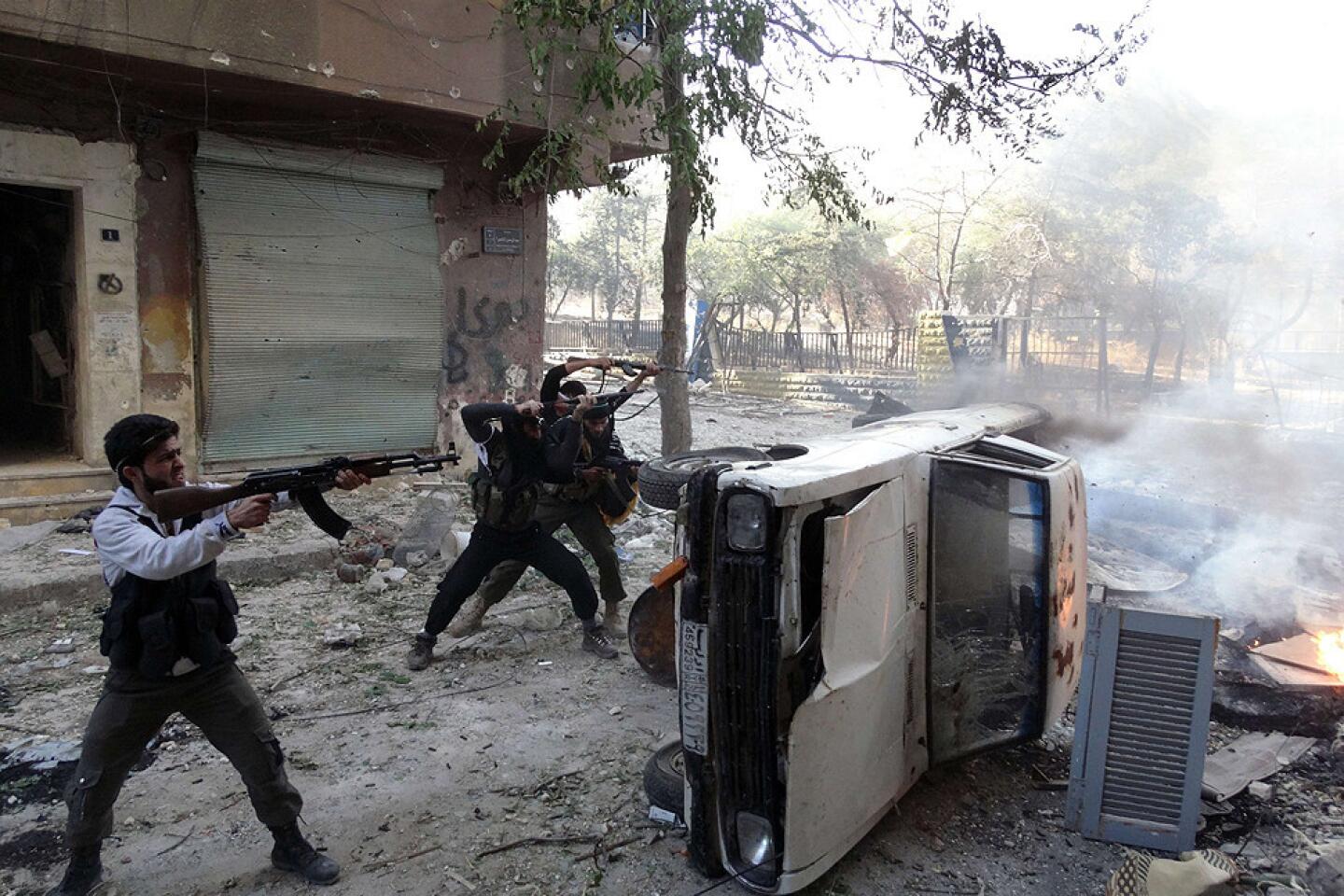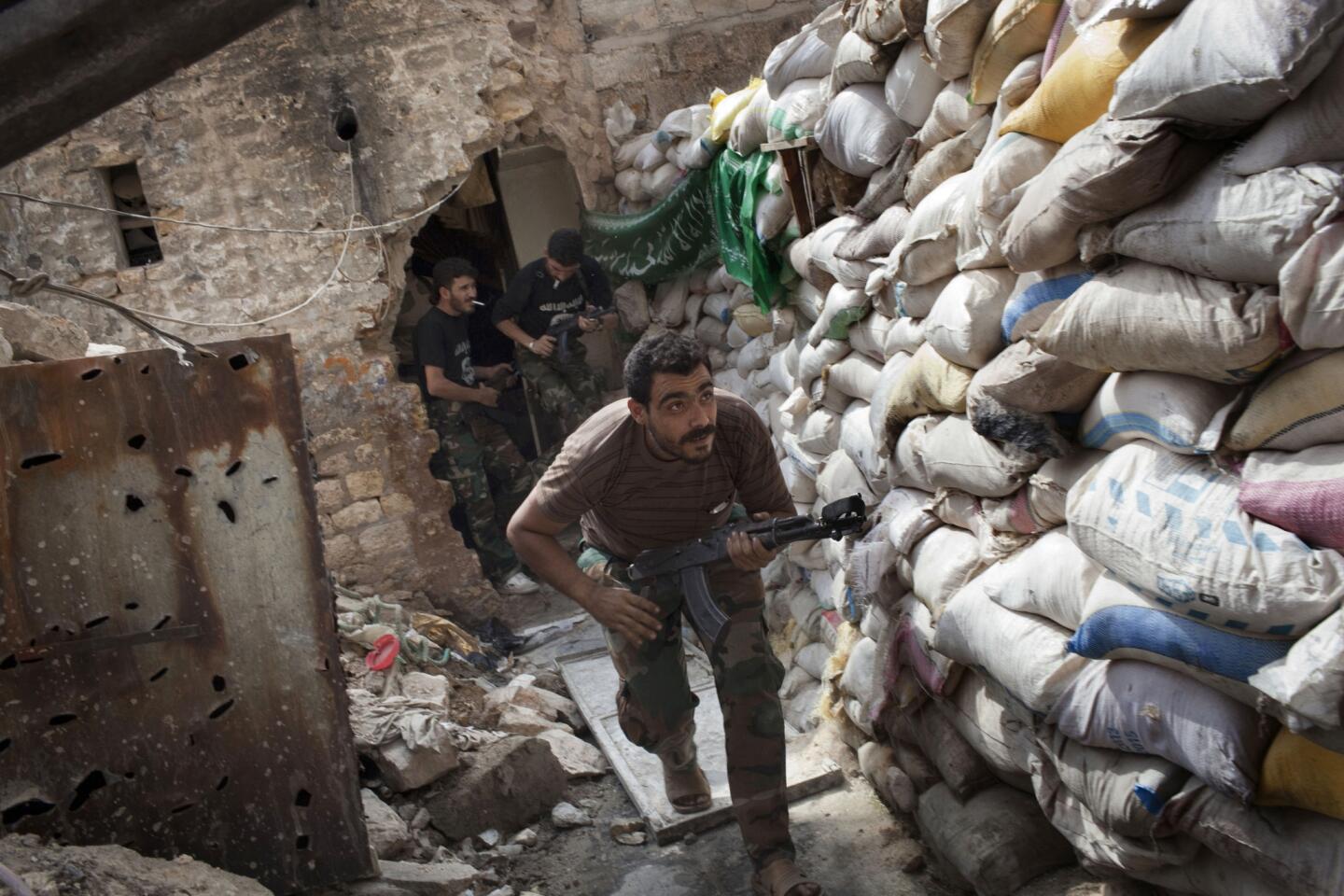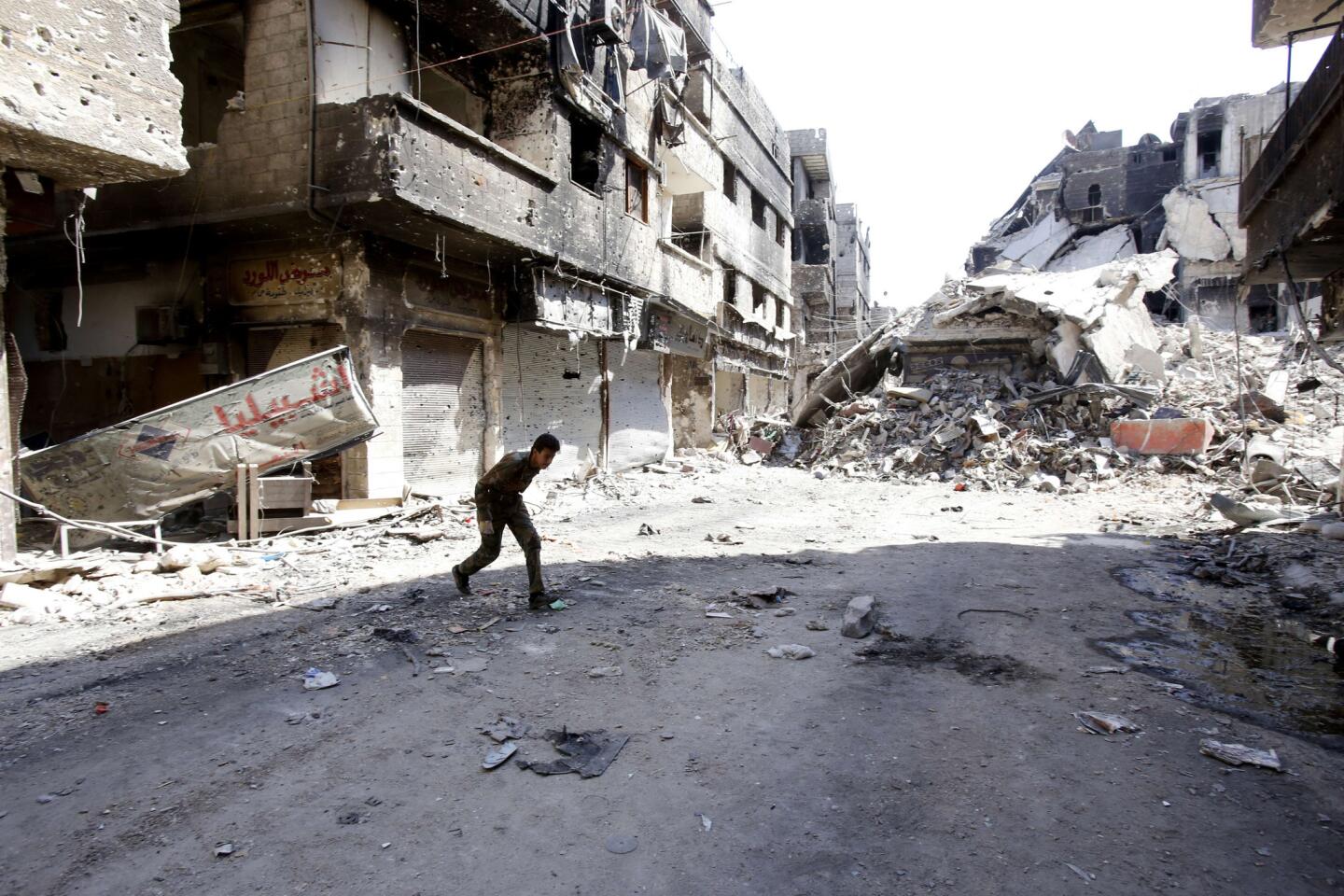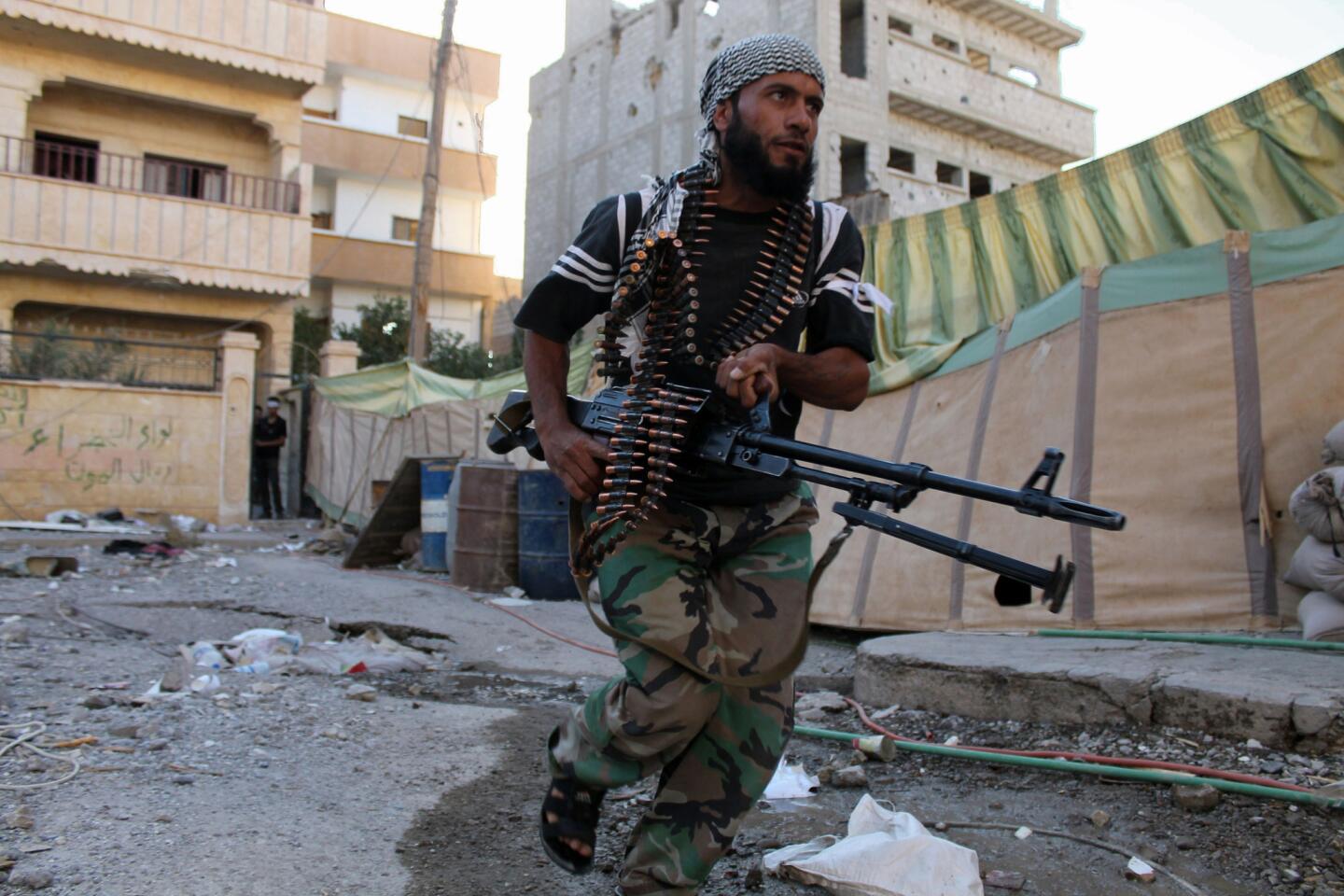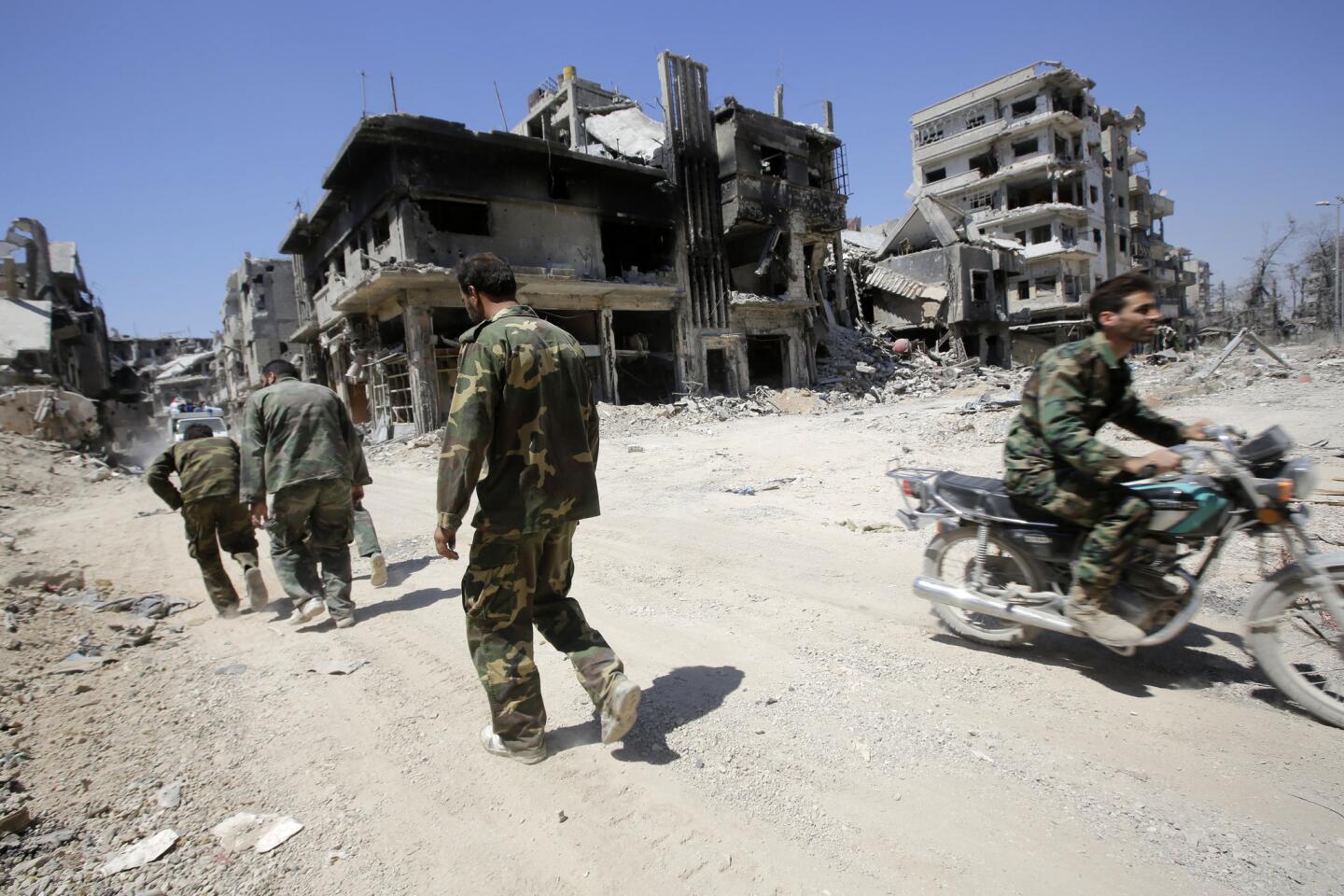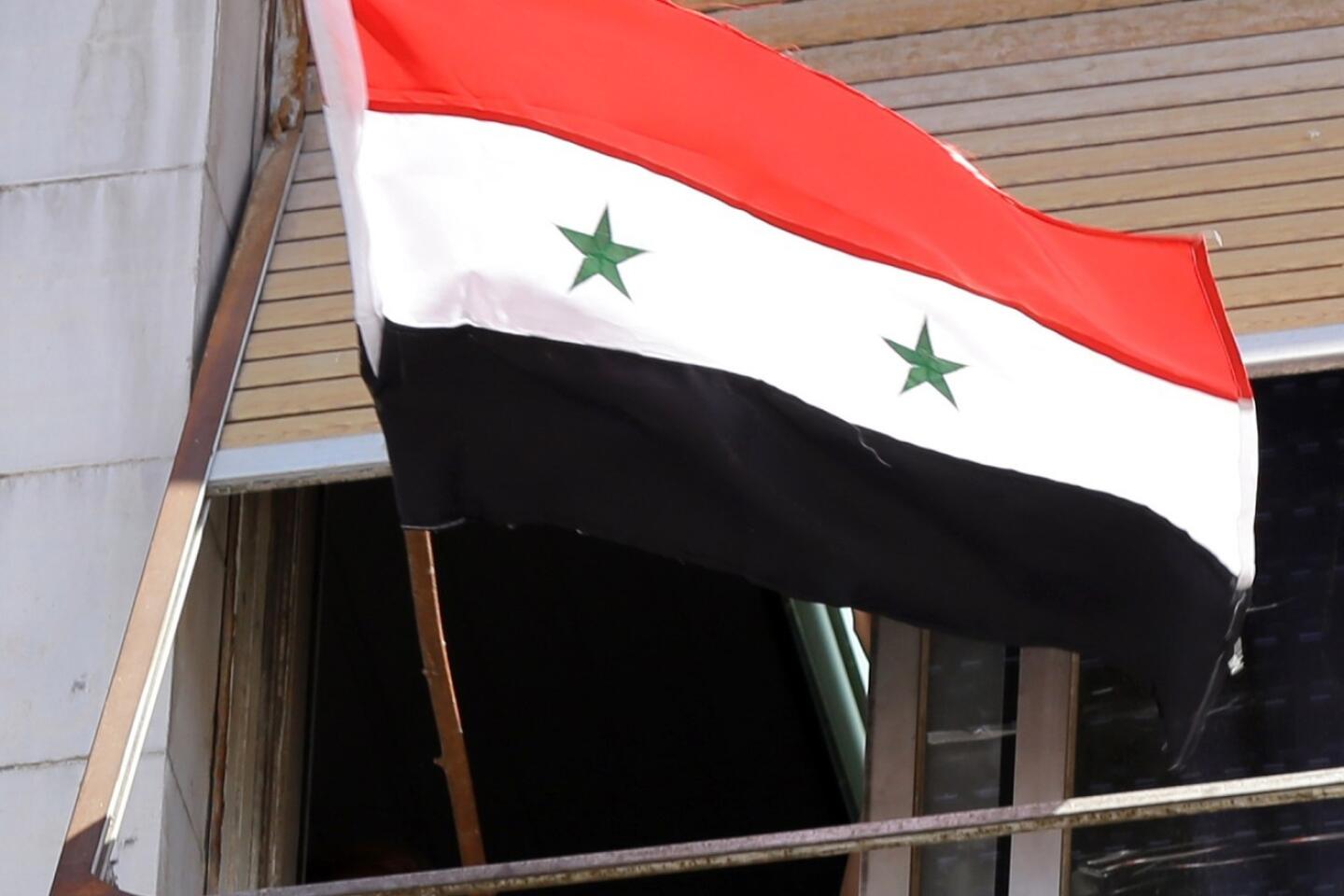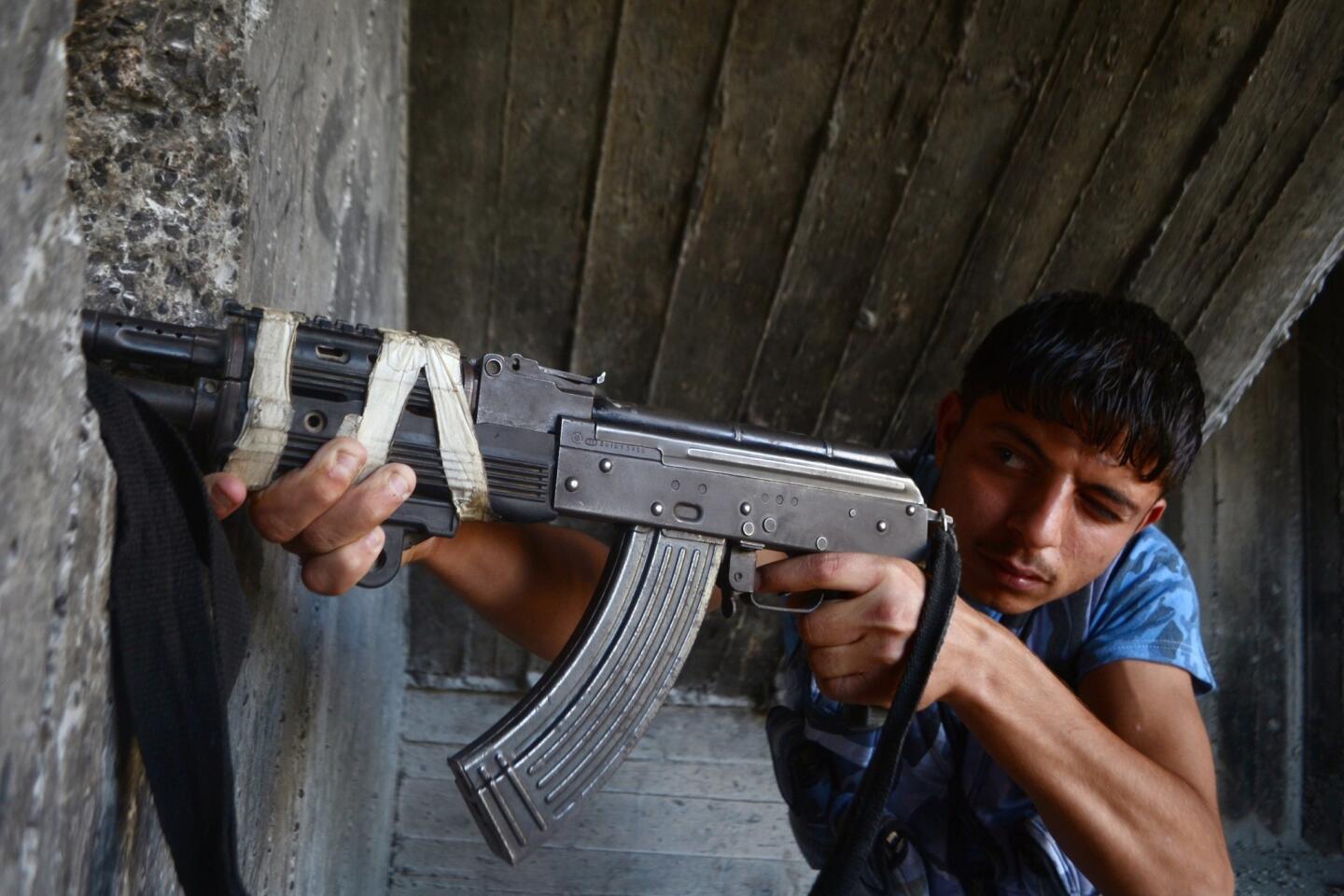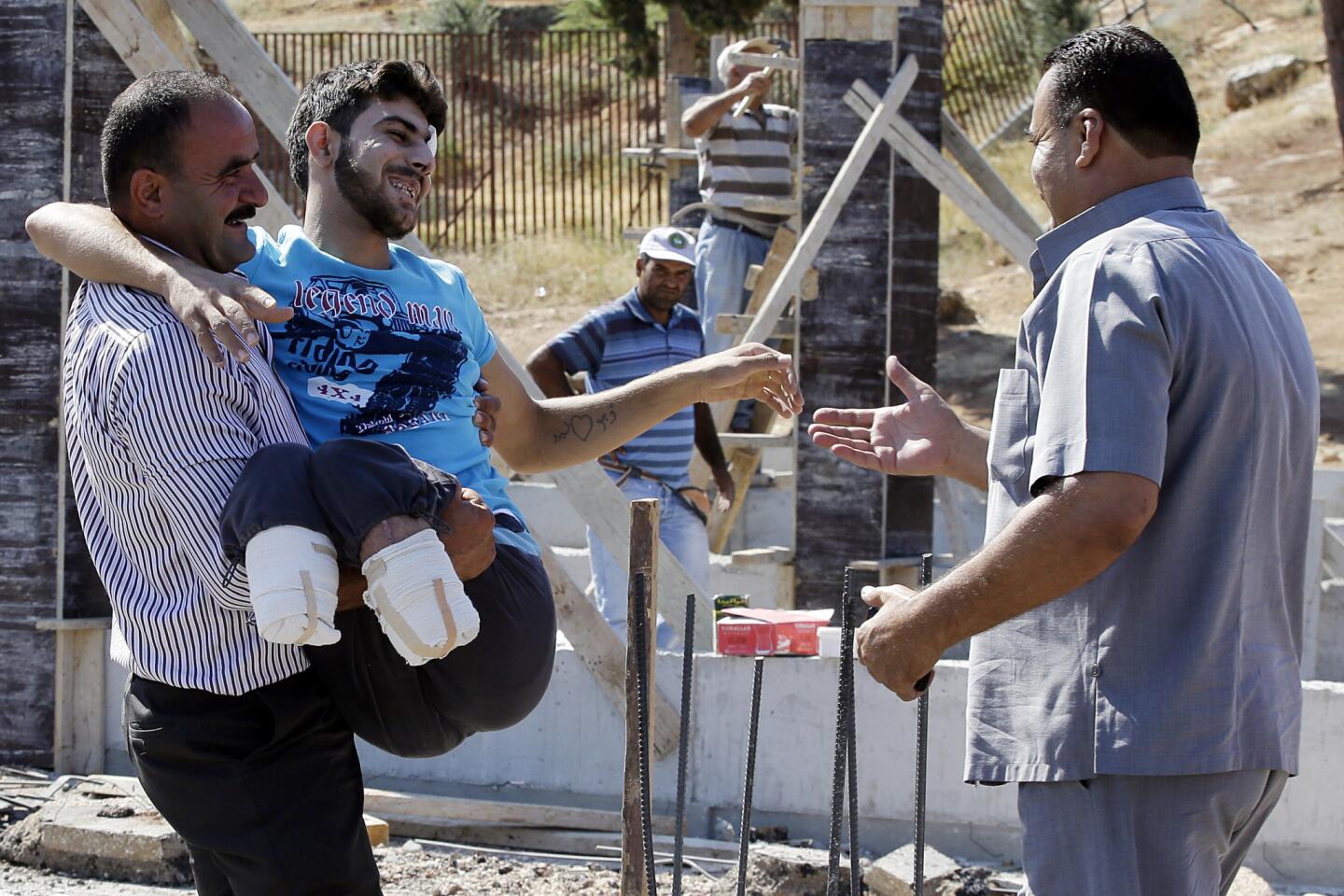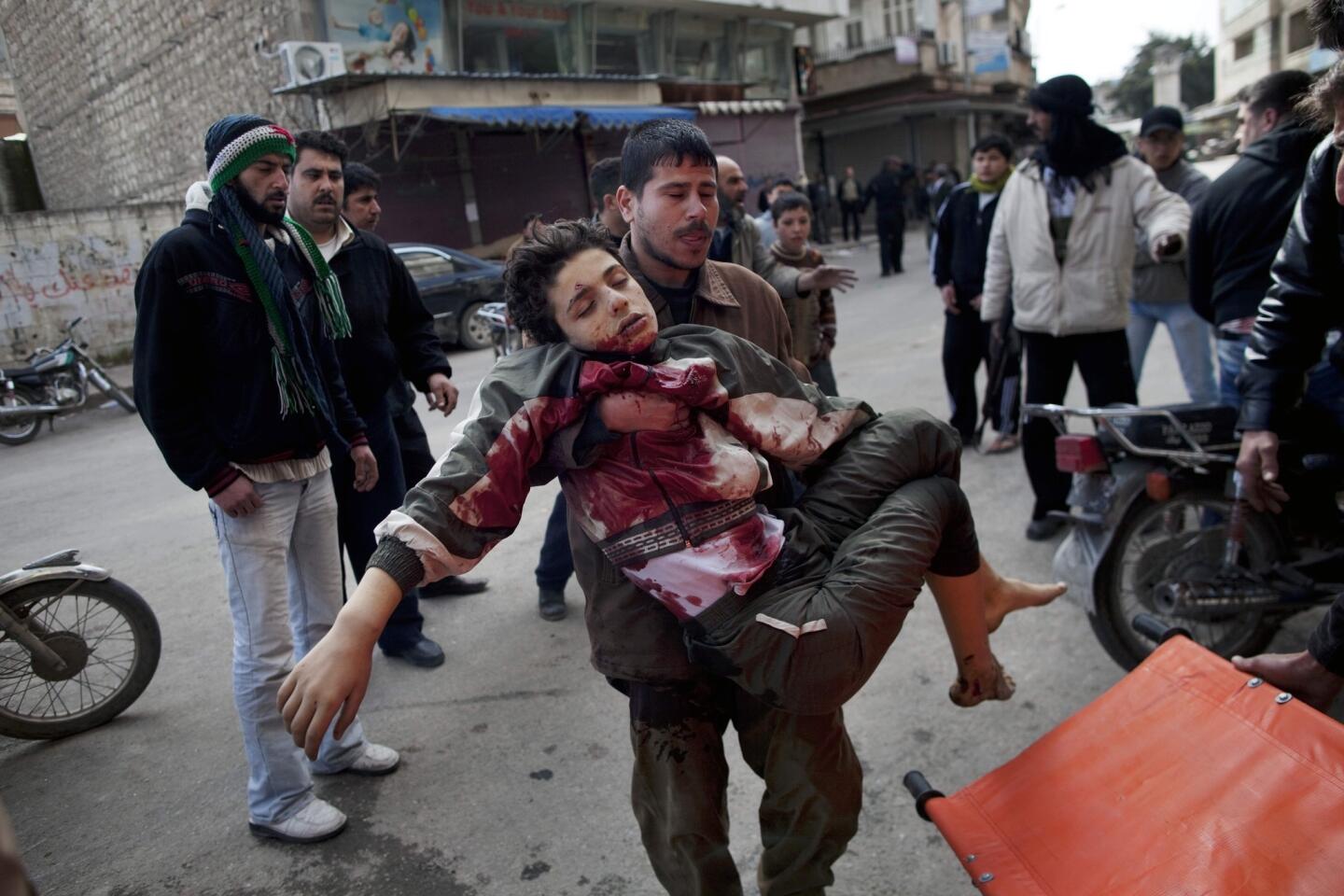Syria’s pro-government militias a major boost for Assad’s army
- Share via
DAMASCUS, Syria — At age 70, Ahmad Saidi took up arms after the slaying of his son, a father of five who was killed when a remote-controlled bomb blew up his car.
A neighbor suspected in the attack was later overheard bragging about his “gift” for the Saidi family.
“This is our homeland,” Saidi, a textile merchant, said this week as he stood in camouflage pants amid the shrapnel-scarred interior of the Zubair Mosque, where even a stack of Korans had been shredded by bullets. “We will die defending it.”
The defiant septuagenarian with the patrician crown of snow-white hair and matching beard is not a soldier with the Syrian army or a militant in a rebel brigade. Rather, he belongs to a neighborhood branch of Syria’s National Defense Forces, a government-backed umbrella group of militias that has emerged as a kind of parallel national army.
Saidi said his son Imad was killed Feb. 2 in the Tadamun neighborhood of Damascus, the Syrian capital, for refusing to join the rebellion against the government of President Bashar Assad.
The many pro-government militias that sprang up with official encouragement after the uprising began in 2011 have been transformed in the last year from ill-organized neighborhood watch groups into a coherent paramilitary organization. The militiamen are near-ubiquitous in the capital and other government-controlled areas of the nation.
The emergence of the militias has provided a crucial boost for the overstretched army, which has suffered heavy losses in a grinding, 21/2-year war on multiple fronts. More than 100,000 people have died, according to the United Nations.
The arming of loyalist militias is a classic if not always winning tactic of counterinsurgency doctrine, employed in Vietnam, Central America and Iraq, among other war zones.
The pro-Assad militiamen, carrying AK-47 rifles and usually decked out in military fatigues and combat boots, sometimes appear indistinguishable from regular army troops, though their numbers usually include some aging and scruffy combatants and others lacking proper gear. On Wednesday, one pro-government gunman near the sand-bagged entrance to the Tadamun district sported a T-shirt, jeans and sandals, with the only sign of authority being a pair of hand grenades and a pistol tucked into his belt.
The militiamen are considered a crucial factor in turning the tide of battle in the government’s favor in recent months. They number in the tens of thousands, and their ever-expanding ranks have allowed the military to dispatch its best troops to vital fronts and leave rear-guard duties to the generally lightly trained militiamen.
The citizen-soldiers man checkpoints, search bags, check IDs, question people deemed suspicious and take on sundry other security tasks, such as trying to spot bomb-laden vehicles and hidden weapons caches. They work in close coordination with the army, and sometimes fight alongside regular forces in the fierce daily battles that mark the conflict.
“We took the burden off the army and let them deal with wider and more extensive operations,” said Abu Elie, nom de guerre of the militia commander in Tadamun, a heavily contested urban patch divided into government- and rebel-held zones.
As he spoke in a second-floor office in an anonymous apartment block, the building shook from the thud of government tank rounds, periodically answered by mortar shells fired from the rebel side. It’s the area’s unvarying soundtrack, along with sporadic gunfire.
No regular troops were visible during a two-hour visit Wednesday to the strategic district, which is an important conduit for rebels trying to infiltrate the capital from the south. Heavy fighting has left swaths of the southern tier of Tadamun in ruins. Much of the population has fled, though children can still be seen playing in the streets a few blocks from the front lines. On one day last year, 98 rebel mortar shells hit the district, according to Abu Elie, who said he was a former army intelligence officer.
“What you hear now are our tanks,” said Abu Elie, boasting that the militia had armored vehicles, artillery and other heavy equipment at its disposal. “As the armed groups have gotten better weapons, so have we.”
The militiamen’s training and other operational details remain hazy. Various fighters interviewed described training sessions ranging from brief refresher courses (most Syrian men must do compulsory military service) to two weeks or even several months for those assigned to fighting in hot spots.
Some describe the militias as a strictly voluntary affair, while others say they are paid, generally the equivalent of about $100 a month — a not insignificant sum in war-ravaged Syria, where jobs are few and prices are rising fast. The units serve as an alternative for men of all ages (and some women) who don’t want to make a long-term commitment to the army. Many members are ex-soldiers. Militiamen often patrol the neighborhoods where they live, giving them an intimate familiarity with the terrain.
“Once this is over, I go back to my job,” said a 46-year-old militiaman in the Old City district of Bab Salam who goes by the nickname Abu Majd and is a goldsmith in civilian life. “We are not fighting for a name, Bashar Assad. We are fighting for our country.”
Many fighters interviewed said they decided to join after losing relatives to the rebels. Raneen, 21, who serves in Tadamun, said she joined after two of her brothers were kidnapped by insurgents. One was later seen in an Internet video being sentenced to death for his pro-government stance, she said. She doesn’t know the fate of her older siblings, but knows both may have been executed.
Rebels have inflicted heavy casualties on the militias, though the government provides no casualty numbers. In Tadamun, which is relatively compact by Damascus standards, 80 militiamen have been killed and more than 100 wounded in the last year, Abu Elie said.
Many militia members appear fiercely loyal and don buttons or T-shirts emblazoned with images of Assad, a clear provocation in some precincts. The militias include disproportionate numbers of generally pro-government minorities — including Alawites, Shiites, Christians and Druze — but in Damascus, many Sunni Muslims are also members.
The capital, like much of the country, remains divided. Opposition activists have complained of harassment and unprovoked attacks by pro-government units, both uniformed fighters and so-called shabiha, notorious plainclothes enforcers ultra-loyal to Assad.
“More than 70% of the people in this area are against us,” a pro-government militia leader confided in the central Sadat neighborhood, where the militia’s presence along bustling King Faisal Street was viewed with cold stares. Informers were probably reporting the fighters’ entry to the opposition, the commander said. His predecessor, he noted, was assassinated with a bomb placed outside his house.
The area had been hit the previous day by three mortar shells, apparently fired by rebels, that left eight civilians dead, including at least three children, he said.
“We shouldn’t linger around here too long,” the wary commander added before escorting visiting journalists from the area. “We could be targeted.”
In the Old City district of Shaghour, where antigovernment protests were common in the first year of the rebellion, the tide has turned in Assad’s favor. Tension between Sunni and Shiite residents that roiled the historic district last year have calmed, according to militia commanders and residents. Some former rebels have even joined the pro-Assad militia and now help keep the peace, they said.
“The armed groups tried to create divisions here in the Old City but it didn’t work,” said Rafiq Lotof, a pro-government media activist and former New Jersey resident who supports the militias in the area. “People saw how other neighborhoods were destroyed, and they didn’t want the same thing to happen here.”
Special correspondent Nabih Bulos contributed to this report.
More to Read
Sign up for Essential California
The most important California stories and recommendations in your inbox every morning.
You may occasionally receive promotional content from the Los Angeles Times.
